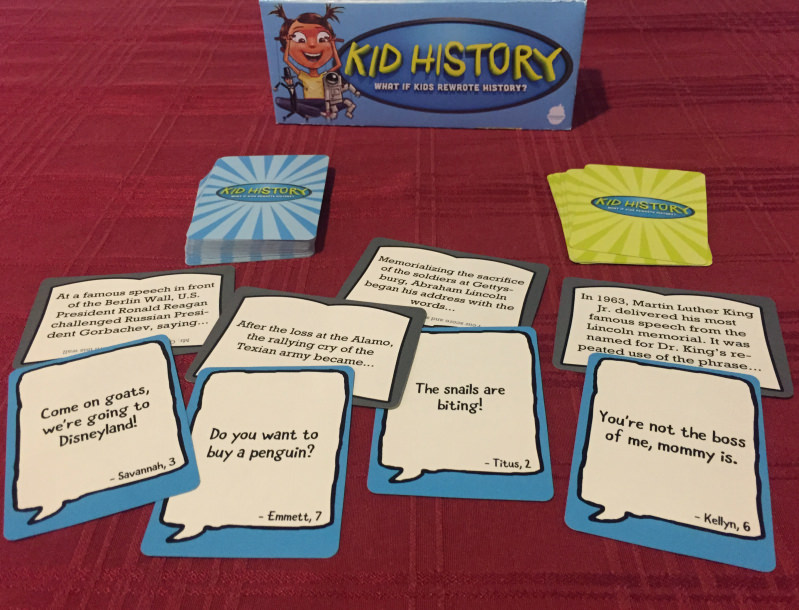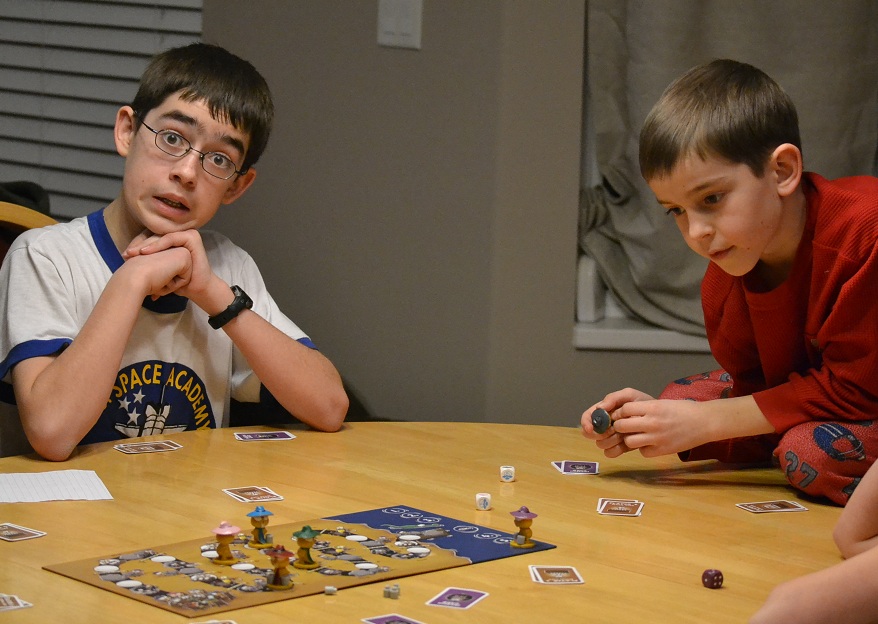Evolution has evolved – even better!
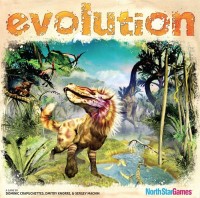
A year ago we previewed a fun strategy board game called Evolution.
We posted our video preview leading up to the North Star Games Kickstarter campaign and were happy to see it become a successful campaign.
Well, now it’s a year later and we’ve just recently been able to enjoy playing the official version of the game. And we’re happy to report that it’s even better than when we played it before!
And that’s not just because of having real components instead of prototype pieces. But the game itself is even more streamlined and fun to play.
Rather than repeat a video like we did for the preview, we’ll simply write about Evolution and our impressions complete with photos of the good stuff.
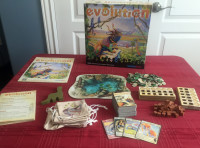
(If you’d like to see the video preview, you can find it at the bottom of the review.)
How to Play Evolution
In a nutshell, Evolution is about creating, adapting, and advancing your species to survive and thrive. The player with the species that adapt the best to the changing environment (paying attention to what species other players are developing) will win the game.
The game is played over a number of rounds with each round consisting of 4 phases:
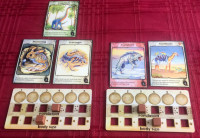
Players start with a single species board and 3 Trait cards. At the start of your turn, if you don’t have a species board in front of you (your animals have gone extinct), then you get to take a new species board as well.
In the Deal Cards phase, every player draws 3 Trait cards plus 1 Trait card for each species they have. So at the start of the game for example, every player would draw 4 Trait cards.
2. Select Food
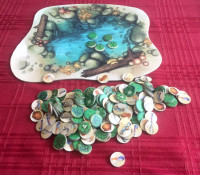
Each card has a number in the bottom right corner that represents a Plant Food value. Players secretly choose one of their cards for the plant food value and place it face down on the watering hole in the center of the table. These cards aren’t revealed until the Feeding phase later.
3. Play Cards
Now each player, in turn order, can play as many Trait cards as they’d like on their turn. A card can be used in multiple ways.
Played as a Trait for one of their species: It’s played facedown by that species board and will be revealed after every player has played their cards. A species can’t have duplicate traits and no species can have more than 3 traits. Players can discard traits from their species along the way as well.
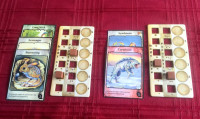
Create a New Species: A player may discard a Trait card to add a new species. They discard the card, take a species board, and place a marker at the Body Size “1” and Population “1”.
Increase in Size of Population: A player may discard a Trait card to increase either the Body Size or Population of one of their species.
Since players can play as many cards as they want, they can do all the above as many times as they have cards to do so. Or they can hold on to those cards for use in later rounds.
4. Feeding
Now the cards on the Watering Hole are revealed and the numbers are added up to determine how much Plant Food is place in the watering hole. Beginning with the first player, each player must feed one of their Hungry species.
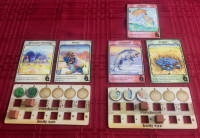
A species is hungry if it has less food than population. So for example, if a species has a population of 3, then that species is Hungry until it has taken 3 food tokens.
Thus, the first player will get to take Plant Food from the watering hole to feed his/her Hungry species and there may not be enough Plant Food left for the players/species that feed later in that round.
One of the Traits that can be added to a species is Carnivore. Carnivores can never eat Plant Food, but instead attack other species for their Meat. If a Carnivore is Hungry, it must attack another species – even if the only species it can attack is one of that own player’s species.
There are special rules about how Carnivores feed, but we won’t go into that here. Needless to say it’s not very difficult to determine.
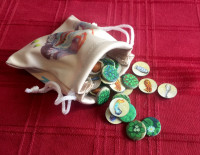
Feeding ends when all species have eaten food equal to their Population or when all Hungry species are no longer able to eat. If a species couldn’t get enough food to fill up to their population, then their population will decrease down to the amount of food eaten. If a species didn’t get any food, it will go extinct!
At the end of this phase, all players take the Food tokens from their species boards and put them in their secret draw bag. Then a new round begins and the Start Player marker (wooden dinosaur) is passed to the left.
End Game
The game ends when the Trait deck has cycled through one time. At the end of that round, players add up the food tokens that they’ve stored in their bag (each token worth 1 point). Then they also get points equal to their surviving species population as well as points for each Trait card on a surviving species.
And that’s how you play Evolution.
The Fun of Evolution
As we mentioned at the start, the published version of Evolution has fantastic components. We love the species boards and how easy it is to track Body Size and Population as well as track food eaten. The icons on the boards work very well and they can also be placed either horizontal or vertical on the table depending on how much space you have to play.
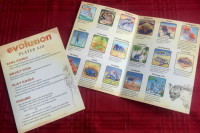
The food tokens are also well-made with a dual use of both Plant and Meat food depending on which species is doing the eating and where the food is found.
Speaking of which, the Watering Hole board is pretty cool too. It really feels like all our animals are focused on this central place for food that we compete over.
But the real fun, and the crux of the game of Evolution, is in the Traits that the species take on. It’s a lot of fun building combinations of traits to create unique species. It takes some strategic thinking to determine which traits to put on which species.
And then there’s the bit of luck in what cards are drawn and what traits the other players will take on. Just when you think you’ve got it figured out, an opponent will pull out a trait you weren’t expecting and devour your species. Or maybe add the Climbing trait to their species so your Carnivore can’t get to it now and you’re left attacking one of your own species.
It all makes for a very interesting and fun game.
Thanks North Star Games for a great strategy board game!
Now check out the difference between the evolved awesome game components of the published version with the prototype in our preview…

